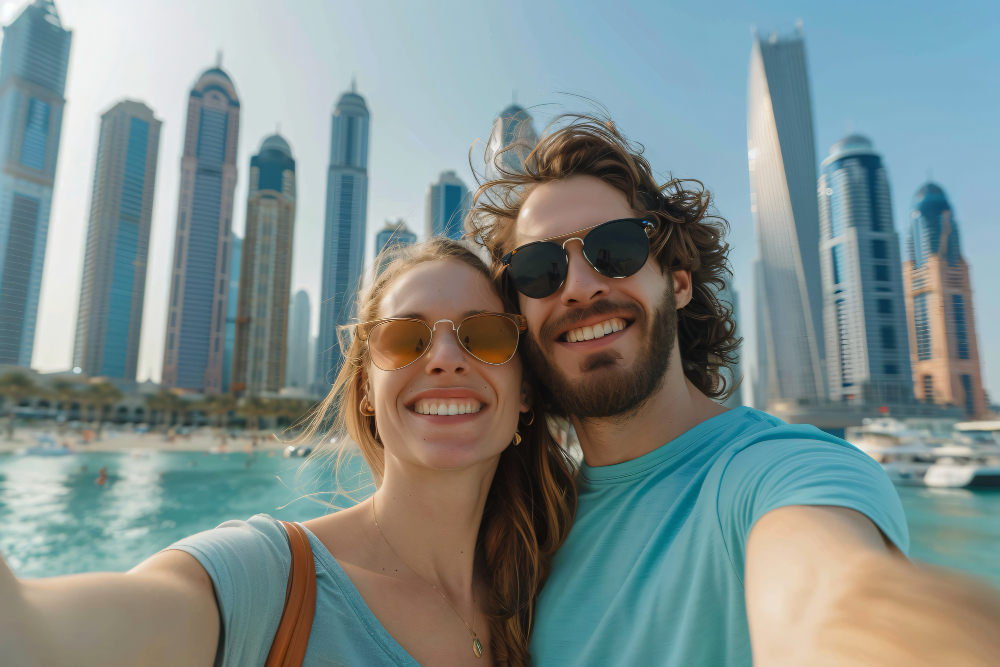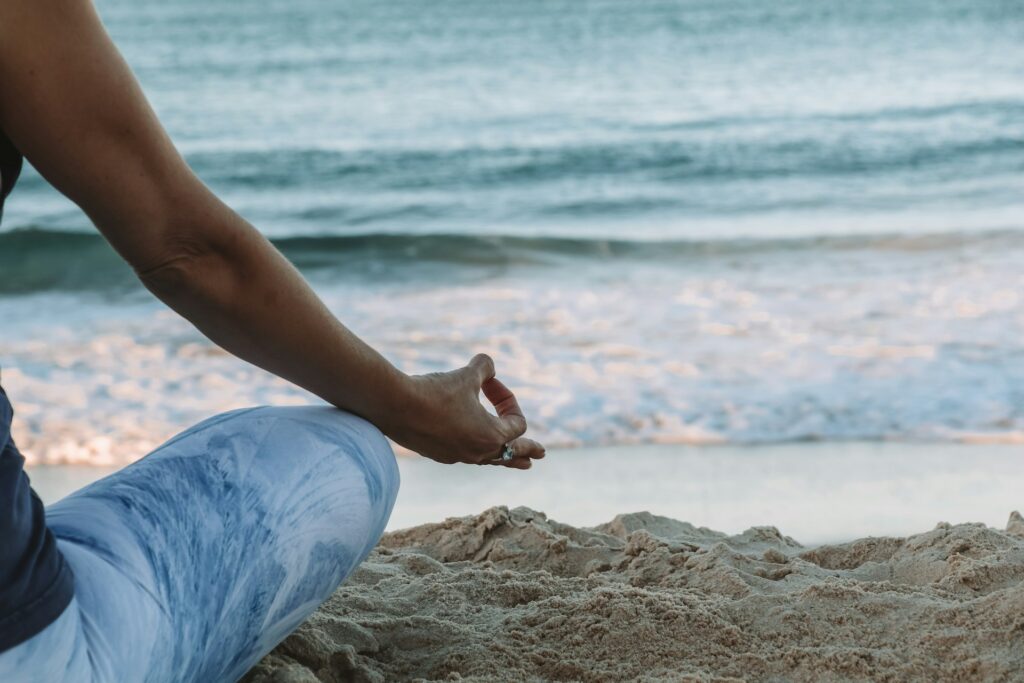Why We Look Different on Camera? Before we dive into solutions, let’s talk about why this happens in the first place. Cameras – whether it’s your laptop webcam, phone, or professional setup – see the world differently than our eyes do. They’re brutally honest about shadows, they flatten dimension, and they have zero patience for mixed lighting situations.
Think about it: when you look in the mirror, your brain is constantly adjusting for lighting changes, filling in details, and essentially giving you the “enhanced” version of reality. Cameras don’t do any of that helpful editing. They just record exactly what they see, which can feel jarring when we’re used to our brain’s natural photo filters.
But here’s where it gets interesting – once you understand how cameras work, you can absolutely work with them instead of against them.
The Foundation: It Starts With Your Canvas
The most camera-ready “filter” isn’t actually a filter at all – it’s healthy, well-cared-for skin that gives you that lit-from-within glow. This isn’t about achieving perfection; it’s about creating a smooth, radiant base that photographs beautifully.
The secret weapon here is consistency rather than complexity. Your skin loves routine, and when you give it what it needs regularly, it rewards you with that natural luminosity that no filter can truly replicate.
Hydration is your best friend. Well-moisturized skin reflects light beautifully, while dehydrated skin can look flat and tired on camera. But we’re not just talking about topical hydration – what you put in your body matters just as much. When you’re properly hydrated from the inside out, your skin has that plump, healthy look that translates incredibly well on screen.
Gentle exfoliation makes a world of difference. Dead skin cells scatter light in all the wrong ways, creating a dull appearance that cameras pick up immediately. Regular, gentle exfoliation – think 2-3 times a week max – helps reveal the fresh, light-reflecting skin underneath.
The magic happens when you focus on supporting your skin’s natural renewal process rather than trying to force dramatic changes. Consistency beats intensity every single time.
Master the Art of Light (It’s Easier Than You Think)
Here’s where we get to the really good stuff – lighting. This is hands-down the most transformative element in looking good on camera, and the best part is that great lighting doesn’t require expensive equipment or professional knowledge.
Natural light is your MVP. Artificial and natural light can create odd color mixing effects, especially on skin tones, so whenever possible, position yourself facing a window during daylight hours. But – and this is crucial – not just any window light will do.
The quality of natural light changes dramatically throughout the day and depending on weather conditions. Overcast days actually provide some of the most flattering light because the clouds act like a giant softbox, diffusing harsh sunlight into something much more gentle and even.
If you’re working with indoor lighting, the key is to avoid mixing different types of light sources. Pick one type – either all natural light from windows, or all artificial light from lamps – and stick with it. Mixed lighting can make colors look unnatural, and your camera will struggle to white balance properly.
Position matters more than you think. The direction light hits your face can completely change how you appear on camera. Front lighting (light coming from directly in front of you) minimizes shadows and creates an even, flattering look. Side lighting can be beautiful but requires more finesse to avoid unflattering shadows.
Here’s a pro tip that costs absolutely nothing: if you’re using a laptop, try elevating it so the camera is at eye level rather than looking up at you from below. This small adjustment changes the angle of light hitting your face and can make a dramatic difference in how you appear on screen.
The 45-Degree Rule and Other Lighting Secrets
Professional photographers have known this for decades: the most universally flattering light comes from about 45 degrees above and in front of your face. This creates gentle shadows that define your features without being harsh or unflattering.
You can recreate this at home by positioning yourself at an angle to a window, rather than directly facing it or sitting with it behind you. If you’re using artificial lighting, position a lamp slightly above and to one side of your computer screen.
Avoid top-down lighting at all costs. Overhead lighting – like most ceiling fixtures – creates shadows under your eyes, nose, and chin that can make you look tired or older on camera. If your room only has overhead lighting, try to supplement it with a desk lamp or floor lamp positioned at face level.
Color Temperature: The Secret Sauce
This is where things get a bit technical, but stay with me because understanding color temperature can be a total game-changer. Different light sources have different “colors” – some are warm (more yellow/orange), others are cool (more blue/white).
Morning and evening sunlight is warm, while midday sun and most LED lights are cooler. Incandescent bulbs are very warm, while fluorescent lights tend to be cool. When you mix these, your camera gets confused about what “white” should look like, and skin tones can appear off.
For the most flattering results, try to use light sources with similar color temperatures. If you’re stuck with mixed lighting, many video calling apps allow you to adjust white balance or color temperature in their settings.
Beyond Lighting: Angles, Background, and Camera Settings
Camera height and angle matter enormously. The most flattering camera angle is typically at eye level or slightly above. Cameras positioned below eye level (like laptop cameras when your laptop is on your lap) tend to be unflattering for most people.
If you’re using a laptop, invest in a laptop stand or stack some books underneath to bring the camera to eye level. If you’re using a phone, consider getting a small tripod or phone stand.
Your background affects how you look. Busy or cluttered backgrounds can be distracting, but they can also affect how your camera exposes your face. Very bright backgrounds (like a window behind you) will cause your camera to darken everything else, including your face. Very dark backgrounds might cause your camera to overexpose, washing out your features.
The ideal background is relatively neutral and doesn’t compete with you for attention. A plain wall, bookshelf, or even a door can work perfectly.
The Psychology of Looking Good: Confidence Shows
Here’s something that doesn’t get talked about enough: confidence is absolutely visible on camera. When you feel good about how you look, it shows in the way you carry yourself, the way you smile, and even the way you speak.
Part of looking good on camera is simply feeling prepared and comfortable with your setup. When you’re not worried about technical issues or wondering if your lighting is flattering, you can focus on being present and engaged – which is incredibly attractive and engaging on camera.
Practice makes perfect. If you have an important video call or virtual presentation coming up, do a few test runs. Open your camera app, try different positions and lighting setups, and see what works best for your space and setup.
Pay attention to what makes you feel confident and comfortable. Maybe it’s wearing a particular color that brings out your eyes, or sitting in a specific chair that helps your posture, or having a certain lighting setup. These details matter because they affect how you feel, which affects how you come across on camera.
Quick Fixes for Common Camera Challenges
Shiny skin: This is incredibly common on camera, especially if you’re in a warm room or feeling nervous. A light dusting of translucent powder can help, but so can adjusting your lighting. Harsh, direct light emphasizes shine, while softer, diffused light minimizes it.
Looking washed out: This usually happens when there’s too much light hitting your face, or when the light is too cool-toned. Try moving slightly away from your light source, or adding something warm-toned nearby (even a piece of colored paper just out of frame can warm up the light).
Dark circles or shadows: These are often caused by lighting from above. Try adding a light source at face level – even your phone’s flashlight held at the right angle can help fill in shadows for a quick fix.
Looking flat or two-dimensional: This is common with very flat, even lighting. A little bit of shadow and dimension actually helps you look more three-dimensional on camera. Try angling yourself slightly to your light source instead of facing it head-on.
Creating Your Personal Camera-Ready Routine
The key to consistently looking good on camera is developing a routine that works for your lifestyle and space. This doesn’t have to be complicated – sometimes the most effective routines are surprisingly simple.
Morning preparation: If you have regular morning video calls, consider what your morning routine needs to include. Maybe it’s as simple as opening your blinds to let in natural light, or setting up a desk lamp in the right position. Maybe it’s having a go-to outfit color that you know looks great on camera.
Your workspace setup: Think about creating a dedicated space that’s optimized for video calls. This could be a specific spot at your dining table with good window light, or a corner of your bedroom with a simple backdrop. Having a go-to setup eliminates the guesswork and stress of figuring out logistics in the moment.
The five-minute check: Before important video calls, give yourself five minutes to do a quick tech and appearance check. Test your audio and video, adjust your lighting if needed, and make sure you’re positioned well in the frame.
The Long Game: Lifestyle Factors That Show Up on Camera
While quick fixes and good lighting can make an immediate difference, some of the most impactful changes happen over time through lifestyle choices that support your overall vitality and energy.
Sleep quality matters more than you might think. Well-rested faces simply look better on camera – there’s more life behind the eyes, better color in the cheeks, and less puffiness overall. This isn’t about getting perfect sleep every night, but rather prioritizing rest when you can.
Movement and circulation make a difference. Regular physical activity improves circulation, which gives you that natural flush and glow that translates beautifully on camera. Even a few minutes of movement before a video call can help you look more vibrant and alert.
Stress management shows up in your face. Chronic stress affects everything from your skin to your posture to the way you carry tension in your facial muscles. Finding ways to manage stress – whether that’s through meditation, exercise, hobbies, or simply better boundaries around work – will ultimately show up as a more relaxed, confident presence on camera.
Embracing Your Natural Radiance
At the end of the day, the goal isn’t to look like someone else or to achieve some impossible standard of perfection. It’s about looking like the best, most confident version of yourself. The techniques we’ve discussed are tools to help you show up authentically and vibrantly, not to transform you into someone completely different.
Remember that everyone looks different on camera than they do in person – it’s just the nature of how cameras work. But with the right approach, you can absolutely look like a polished, confident, radiant version of yourself.
The most important thing is to experiment and find what works for you. Your living situation, your natural coloring, your personal style – all of these factors influence what will be most effective for your unique situation.
Start small and build up. Maybe this week you focus just on improving your lighting setup. Next week, you might experiment with camera angles. The week after that, you could work on optimizing your morning routine. Small, consistent improvements compound over time and lead to much more dramatic results than trying to change everything at once.
The beauty of this approach is that once you find your formula, it becomes second nature. You’ll know exactly how to position yourself, what lighting works best in your space, and what makes you feel most confident on camera. And that confidence – that’s the real secret to looking good without filters.

Important Note: The information provided in this article is for general lifestyle and wellness purposes only and should not be considered professional advice. Individual results may vary, and it’s always best to consult with appropriate professionals for specific concerns regarding skincare, health, or professional appearance needs. This content is not intended to diagnose, prevent, or provide solutions for any specific medical or cosmetic conditions.



